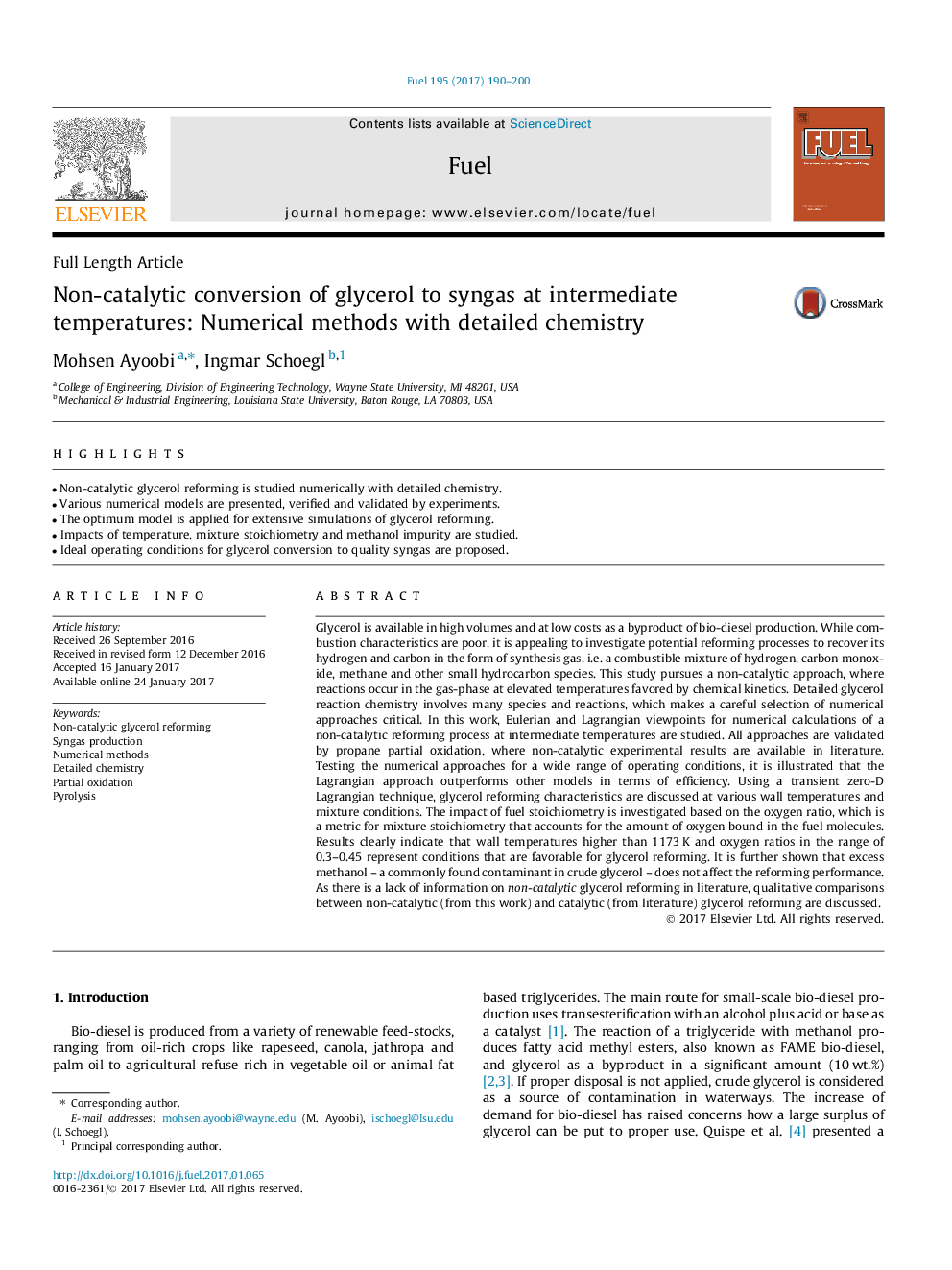| کد مقاله | کد نشریه | سال انتشار | مقاله انگلیسی | نسخه تمام متن |
|---|---|---|---|---|
| 6475369 | 1424969 | 2017 | 11 صفحه PDF | دانلود رایگان |
- Non-catalytic glycerol reforming is studied numerically with detailed chemistry.
- Various numerical models are presented, verified and validated by experiments.
- The optimum model is applied for extensive simulations of glycerol reforming.
- Impacts of temperature, mixture stoichiometry and methanol impurity are studied.
- Ideal operating conditions for glycerol conversion to quality syngas are proposed.
Glycerol is available in high volumes and at low costs as a byproduct of bio-diesel production. While combustion characteristics are poor, it is appealing to investigate potential reforming processes to recover its hydrogen and carbon in the form of synthesis gas, i.e. a combustible mixture of hydrogen, carbon monoxide, methane and other small hydrocarbon species. This study pursues a non-catalytic approach, where reactions occur in the gas-phase at elevated temperatures favored by chemical kinetics. Detailed glycerol reaction chemistry involves many species and reactions, which makes a careful selection of numerical approaches critical. In this work, Eulerian and Lagrangian viewpoints for numerical calculations of a non-catalytic reforming process at intermediate temperatures are studied. All approaches are validated by propane partial oxidation, where non-catalytic experimental results are available in literature. Testing the numerical approaches for a wide range of operating conditions, it is illustrated that the Lagrangian approach outperforms other models in terms of efficiency. Using a transient zero-D Lagrangian technique, glycerol reforming characteristics are discussed at various wall temperatures and mixture conditions. The impact of fuel stoichiometry is investigated based on the oxygen ratio, which is a metric for mixture stoichiometry that accounts for the amount of oxygen bound in the fuel molecules. Results clearly indicate that wall temperatures higher than 1173Â K and oxygen ratios in the range of 0.3-0.45 represent conditions that are favorable for glycerol reforming. It is further shown that excess methanol - a commonly found contaminant in crude glycerol - does not affect the reforming performance. As there is a lack of information on non-catalytic glycerol reforming in literature, qualitative comparisons between non-catalytic (from this work) and catalytic (from literature) glycerol reforming are discussed.
Journal: Fuel - Volume 195, 1 May 2017, Pages 190-200
